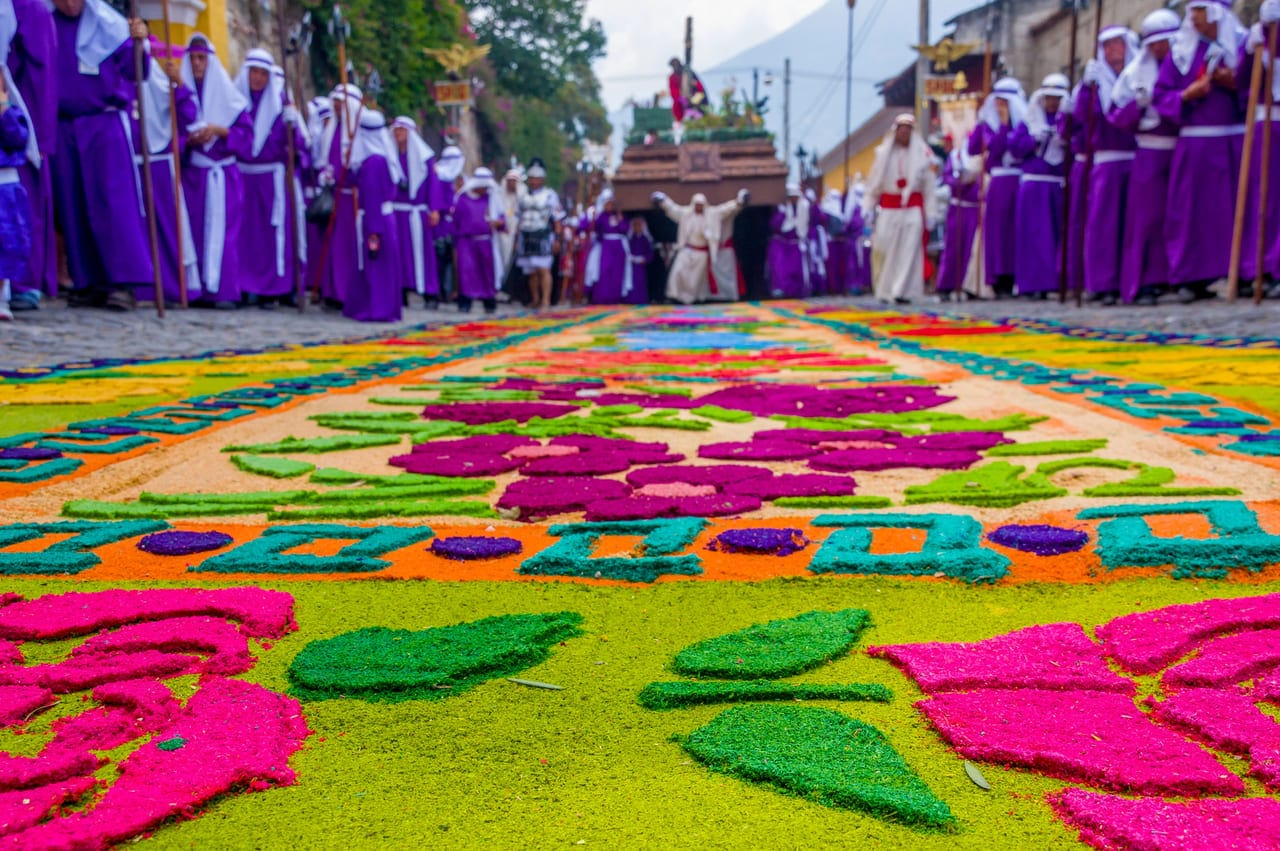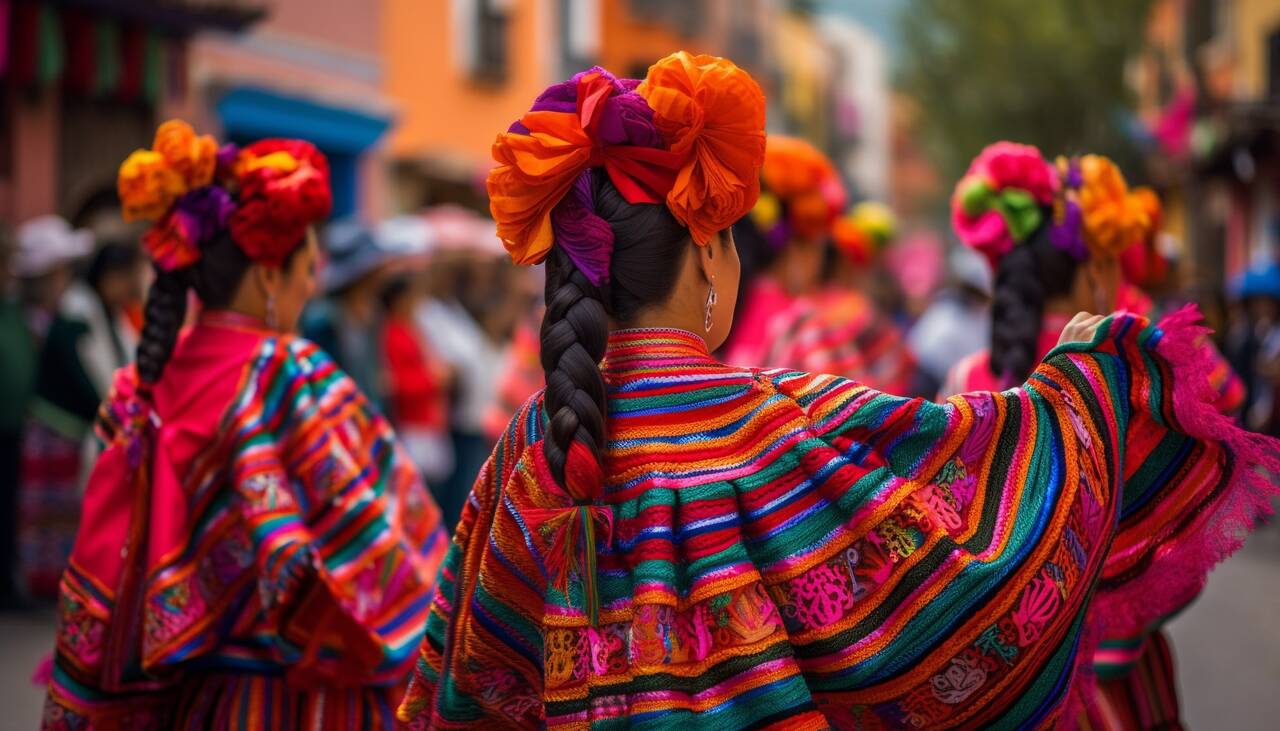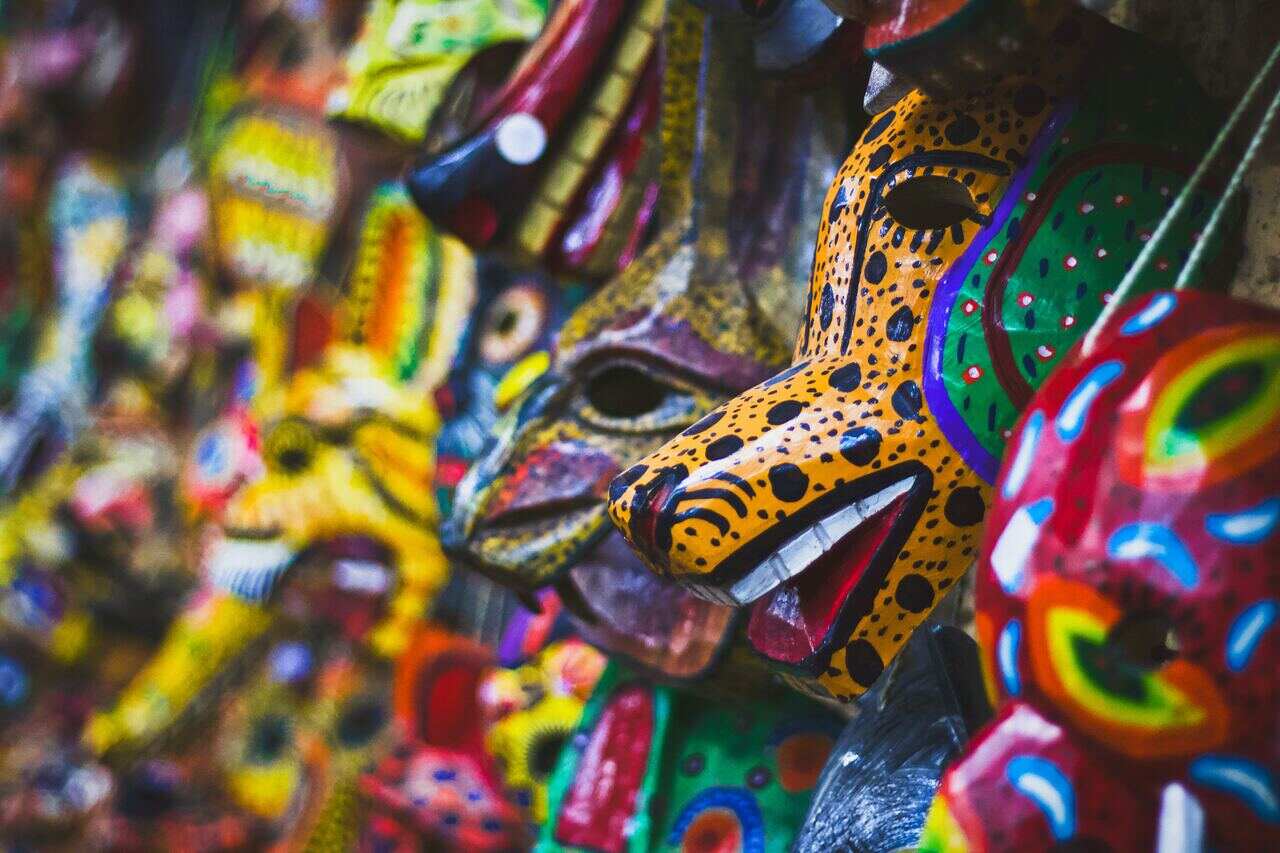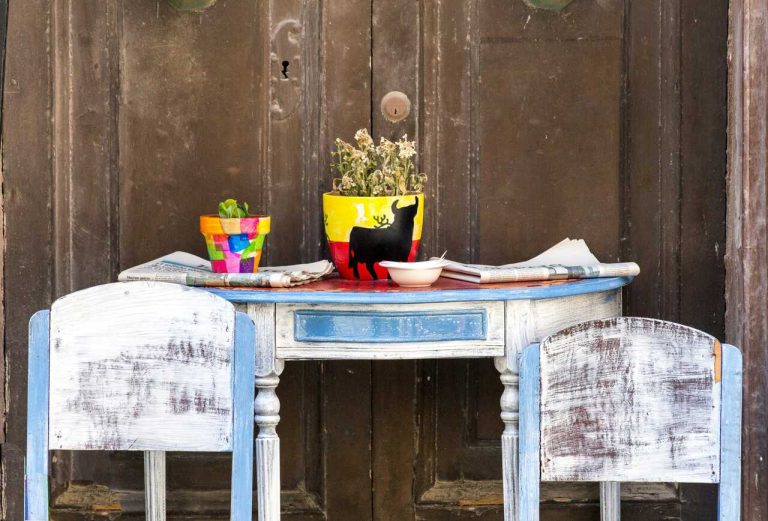
Traditions in Guatemala and their Astounding Roots
DATE:
Delve into the heart of Guatemala, a land where traditions unfurl like a colorful tapestry across the sprawling landscapes. Have you ever imagined the sky adorned with colossal kites, each one a vibrant message to the ancestors, a spectacular sight that unfolds in a small Guatemalan town? It’s more than just intriguing; it’s a testament to the profound connection between the living and the departed.
As we embark on this travel to Guatemala, let’s leave behind the bustling cityscapes and head to the tranquil landscapes of the rural areas, where traditions aren’t just rituals; they are the pulse of daily life. Here, you’ll find a fusion of old and new, a cultural panorama where time-honored practices harmoniously coexist with contemporary influences.
In the heart of Guatemala City, marimba music echoes through the streets, guiding locals and wanderers alike on a melodious journey. It’s the very heartbeat of this city, pulsating with rhythms that draw you in and make your feet sway to the vibrant tempo.
Are you ready to delve deeper into the astonishing traditions of Guatemala, where every corner holds a unique story, a distinct flavor, and a vivid celebration? Let’s embark on this captivating journey, one where the past and the present coexist, where tradition dances with innovation, and where you become a part of the living, breathing Guatemalan culture.
A Kaleidoscope of Festivities in Guatemala
Semana Santa: A Spiritual Journey
Holy Week, or Semana Santa, is one of the most cherished religious traditions in Guatemala, particularly in Antigua Guatemala. The week is filled with meticulous religious processions, stunning nativity scenes, and vibrant alfombras (carpets) made of colored sawdust, flowers, and even fruits, lining the cobblestone streets. The fervor and devotion during this week reflect the profound impact of religious festivals on Guatemalan families.
Soaring Spirits: The Kite Festival
In Santiago Sacatepéquez, come November 1, the sky is adorned with huge kites, meticulously crafted with paper and bamboo. This fascinating spectacle is not merely for entertainment. Guatemalan people believe these giant kites provide a medium through which they can communicate with their deceased relatives, blending art with spiritual belief seamlessly.
Culinary Traditions: A Feast for the Palate
Ah, traditional food! Traditional Guatemalan dishes, like Tamales (dough steamed in a banana leaf) and Pepián (a spicy stew), mirror the rich cultural diversity of the country. During most important holidays, families gather to prepare and enjoy these dishes together, intertwining Guatemalan traditions and gastronomy wonderfully.
Captivating Traditional Dances
Embark on a mesmerizing journey through the Deer Dance, a stunning representation of Guatemala’s rich tapestry of traditional dances, beautifully intertwining Maya and Spanish influences. Performers, adorned in vibrantly symbolic costumes, become storytellers, weaving tales from indigenous people with every spirited step, all harmoniously accompanied by the soulful strains of marimba music. Beyond mere entertainment, this dance serves as a vibrant bridge, connecting past and present, and immersing spectators in a deeply rooted cultural narrative, where every movement pulsates with the echoes of ancestral stories and timeless Guatemalan traditions.
DID YOU KNOW…?
In Santiago Sacatepéquez, colossal kites, spanning up to 20 meters, embellish the sky on the Day of the Dead. Believed to connect with spirits of the departed, these kites, crafted over months, transform cemeteries into vivid venues, celebrating life amidst remembrance.
Navigating Through Guatemala’s Rich Cultural Tapestry
Patron Saints: Bridging the Divine and Mortal
In various towns and villages across Guatemala, each town’s patron saint is honored with elaborate religious festivals. Festivities are spread throughout the year, offering a splendid array of music, folkloric dances, and vibrant parades, binding the community together in joy and devotion.
Take the town of Todos Santos Cuchumatán, for instance. On All Saints Day (Todos Santos), the town pulsates with energy during the Drunken Horse Racing. This somewhat perilous yet thrilling event is a testament to the unique blend of solemnity and celebration in Guatemalan traditions.
Independence Day: A Symphony of Celebration and Unity
Independence Day (September 15) is another cornerstone in the rich tableau of national holidays in Guatemala. The air vibrates with the resonant beats of marching bands, lively parades, and, of course, the ubiquitous marimba music. The Guatemalan celebration is not merely a display of national pride but a harmonious symphony that unites Guatemalan people from various ethnic and social backgrounds.
La Feria de Santo Tomás: A Mingle of Modernity and Tradition
In Chichicastenango, during La Feria de Santo Tomás (St. Thomas Fair), Guatemalan families converge to engage in a melange of ancient and contemporary celebrations. For instance, Palo Volador, or the “Flying Pole Dance”, witnesses participants launching themselves from high poles in a mesmerizing display, symbolizing their connection with the divine.
Isn’t it heartening to visualize communities, families, and friends gathering together, celebrating the togetherness and collective identity encapsulated in these diverse traditions?While these various festivities resonate with vibrancy and unity, the crux of Guatemalan culture is embedded in the day-to-day lives of the locals, whether they reside along the Caribbean coast, within bustling Guatemala City, or in serene rural areas.

DID YOU KNOW…?
“La Quema del Diablo,” or “The Burning of the Devil,” on December 7th, involves Guatemalans creating heaps of trash and unwanted items, topped with a devil figurine, outside their homes. At 6:00 PM, they’re set ablaze, symbolizing the expulsion of evil and welcoming holy Christmas festivities.
Savoring the Delectable Tapestry of Guatemalan Gastronomy
A Symphony of Flavors and Aromas: Traditional Guatemalan Dishes
The realm of traditional food in Guatemala is a splendid symphony, where each dish plays a harmonious note, tantalizing taste buds and immersing them in a unique culinary experience. Three predominant staples woven into the traditional Guatemalan dishes tapestry are corn, chilies, and beans, primarily the famed black beans.
Imagine a table, sprawled with tamales, enveloping rich, savory fillings within a delicate maize dough, and pepian, a spicy stew that harmoniously blends various ingredients symbolizing the melting pot that is Guatemalan culture.
Fiambre: A Culinary Tribute to Deceased Relatives
Perhaps one of the most symbolic dishes, fiambre, takes center stage during All Saints Day. Families gather, honoring their deceased relatives with a dish that is as rich and complex as the memories held dear. A melange of cold cuts, sausages, vegetables, and even fresh fruits are intricately layered, forming a dish that symbolizes the unity of flavors, and more metaphorically, the union of family, both present and those who’ve passed.
The Sweet and the Savory: A Dual Dance in Guatemalan Cuisine
Savoring traditional Guatemalan dishes, one encounters the beautiful dual dance between the sweet and the savory. Rellenitos, a delicious concoction of plantains and refried beans, demonstrates this dual dance superbly. The sweet notes of the ripe plantains gracefully twirl with the savory depth of the beans, offering a taste that is quintessentially Guatemalan.
Colors and Symbols: The Art of Guatemalan Textiles
A Heritage Woven in Threads
Step into the world of Guatemalan textiles, where vibrant colors and intricate patterns tell stories of tradition, identity, and cultural pride. The art of weaving holds immense significance in Guatemalan culture, passed down through generations. Each piece of fabric is not just an aesthetic creation but a window into the rich cultural tapestry.
The Mayan Influence
The Maya civilization’s legacy shines brightly in Guatemalan textiles. Patterns and motifs are often deeply rooted in ancient Mayan symbolism. Every thread carries history, with geometric designs representing elements of nature, spirituality, and the cosmos. These textiles are more than just adornments; they’re expressions of a profound connection to their indigenous roots.
The Creative Process
Guatemalan families often engage in the creation of textiles as a communal activity. Mothers pass their knowledge to daughters, and weaving becomes a form of communication and expression. From spinning raw cotton to dyeing it with natural materials, the intricate process takes time and skill, resulting in unique pieces that reflect local traditions and regions.
Garb with Significance
Traditional clothing, known as traje, varies from region to region, with each piece conveying a specific message. The garments are not just for everyday wear; they represent community identity, cultural belonging, and even marital status. Understanding the significance of these garments is like deciphering a silent language, one that speaks volumes without words.

Wrapping Up!
Exploring the splendid traditions in Guatemala, we’ve encountered numerous instances where the language beautifully intertwines with traditions, offering a more authentic and enriching experience.
If your curiosity is piqued and you’re enticed to delve deeper into the Spanish language, SpanishVIP welcomes you with open arms. Immerse yourself in the language with the guidance of our Dedicated Teachers and the unwavering support of our Student Success Advisors.
Start with a free 1:1 class or enjoy free 7 days of group classes, unraveling the layers of Spanish, enabling you to dance rhythmically with the vibrant traditions of Latin America.








